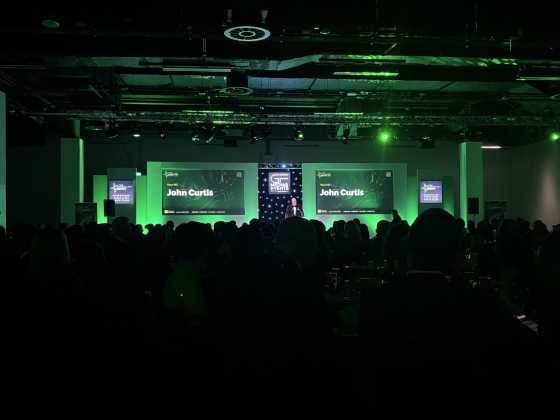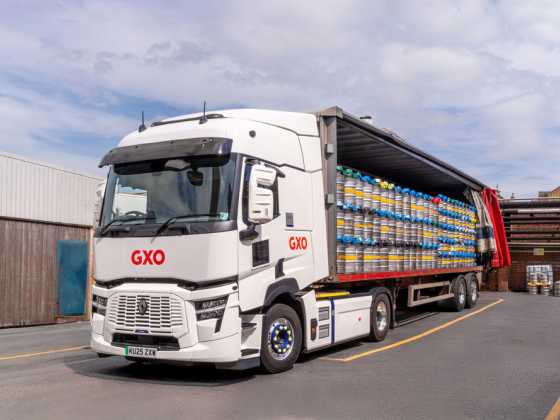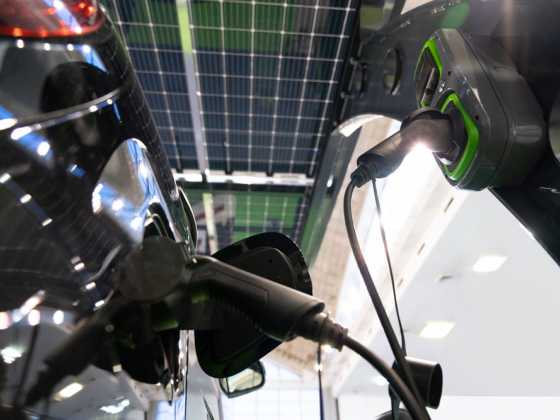Panel of Experts: Road to Zero

The UK has a target to be net zero emission by 2050, and when it comes to the decarbonisation of transport, electrification plays a central role. But is it the only route? And what happens if electric vehicles are deemed unsuitable? Our panel of experts – Shaun Sadlier, Steve Beadle, Tristram Benson, and Daniel Ainsworth – discuss
When the government released its Road to Zero Strategy, it declared that it would be “technology neutral” and that it would not “speculate on which technologies might help to deliver the government’s mission.”
However, at this stage, the country is mostly geared up for electrification, with significant investments from government and industry to build adequate EV charging networks and incentivise the purchase of electric vehicles.
But what other ways can transport, specifically fleet operations, become net zero?
Steve Beadle, head of 0Zone at The Grosvenor Group, believes it is right to explore multiple avenues when it comes to decarbonising transport. He said: “Whilst we are all gearing up for electrification, there is a growing feeling that electric powered vehicles may not be the ultimate solution for the future.
“It’s hard to imagine how electric vehicles, battery supply and a global charging infrastructure can provide a robust enough transport solution around the world, and ultimately other carbon zero mobility solutions will grow in popularity.
“It’s unlikely that there will be one single approach. Instead we’re likely to see a growth in hydrogen vehicles, a dramatic increase in car sharing and mobility (MaaS) as a solution, thus reducing the need for people to have their own vehicles, and while we are all focused at the moment on going electric, it is likely that EVs will be just one component part of a bigger transport mix in the longer term.
“For the time being however, electric vehicles offer the only truly viable solution for helping businesses and private individuals achieve zero emission motoring.”
Assessing the options
Arval’s Shaun Sadlier echoes that it’s important to consider all the options when it comes to decarbonising mobility. He says: “Electrification is currently the government’s focus to achieve net zero for transport, however it is important that individuals and companies implement a multi-solution approach to mobility.
“At Arval UK, we follow closely the development of hydrogen as an alternative fuel type, but in the short term, we believe that its use will be focused on larger forms of transport than cars and light commercial vehicles, such as buses and heavy goods vehicles.
“Importantly, employers and their employees’ expectations have profoundly changed in terms of mobility and its environmental impact; they are increasingly looking to make better-informed choices on their mobility based on its efficiency, cost and very importantly, its environmental impact.”
Tristram Benson, commercial director at Engineius, agrees that it’s right to take a varied strategy when it comes to reaching zero-emission transport. “Technology neutral is an interesting term and can be interpreted in different ways,” comments Tristram. “Given the lack of direction that the public have experienced from the Government in 2022, it would be fair to conclude that this statement is non-committal. However, I would encourage you to see it in a more positive light.
“To quote Warren Buffet – the world leading investor and billionaire – ‘Diversification is a protection against ignorance’. To diversify means to become more varied and in business, diversification leads to the reduction of risk.
“In the case of transport achieving net zero, a varied strategy is essential. Electric will work for some operations, whilst hydrogen will work for others. As such, it is key to invest in all green tech, such as the market sees fit. Importantly, this will lead to reduction of risk, we all know the dangers of putting all our eggs in one basket.
“It is a neutral position here, and continued openness to disruptive tech and opportunities which will see the UK continue to lead in this topic globally.”
Thinking differently
Using cargo bikes for urban operations and last mile deliveries is another solution in the UK’s decarbonisation toolbox. Daniel Ainsworth, business development manager in the B2B team at Raleigh, said: “The list of ways businesses are using cargo bikes to become net zero is becoming more prominent daily in the UK.
“By offering trails of e-cargo bikes, companies are testing out how they can fit into their businesses rather than them fitting around it. For example, this year alone, I have seen e-cargo being used for time-sensitive blood bank deliveries in central London and builders carrying building materials for cycle path repairs. These examples are just a couple of situations that show the tools to help an organisation become net zero are already there; we now need to work to make them fit into the organisation.”
Setting net zero goals
With the UK aiming to bring greenhouse gas emissions to net zero by 2050, and dates in place for phasing out fossil fuelled vehicles, many organisations are making their own commitments to become net zero.
Pledges such as the Clean Van Commitment and the EV100 are public declarations from businesses to eliminate their fleet emissions – and to signal to the government and industry that the demand for clean transport is strong.
That said, it can be daunting for some organisations, particularly SMEs that might have restricted resources, limited knowledge, and tight budgets. So for an organisation that hasn’t started its electrification plans, what’s the best way to assess whether electric vehicles are right for their fleet?
Shaun Sadlier from Arval comments: “With the average vehicle lease lasting around five years, 2030 is now less than two renewal cycles away. So now is the time to start implementing electric vehicles.
“The work that we have done with hundreds of clients has been to position electric simply as a power choice alongside petrol and diesel for passenger cars on their fleet. Introducing some minor changes to their company car policy and the introduction of a whole life cost methodology, to ensure electric cars can be efficiently and cost effectively included on car choice lists, are great first steps towards electrification.”
Regarding electrifying vans, Shaun understands that this can be more complex: “The approach we have used with a number of fleets has been to survey their drivers to find those that fit the criteria of having a suitable mileage profile, access to off road charging and a positive outlook about driving an electric van. These drivers can then provide information on what advantages having an electric vehicle has on both the driver and the daily operation of the business. To support customers, we have provided a large number of electric vans on a flexible basis so they can try the vehicles for a shorter period within their fleet.”
Adapt or risk consequences
Tristram Benson from Engineius believes that changing your mindset and setting your vision are the important first steps when implementing a decarbonisation strategy. He says: “Companies are often too quick to think ‘let’s crunch some data and decide whether it makes commercial sense’. This is how we are trained to make business decisions, so fair enough.
“But, I would encourage you to step back and think of the big picture first. This is not just another project. The environmental sustainability of your organisation will directly affect your ability to do business over the course of the next five, ten or twenty years.
“Of course, in considering whether EVs are right for your fleet, you must also consider whether they make commercial and operational sense. But remember, if you are not willing to make sacrifices or embrace organisational change, it will have drastic implications for your business, long term.”
Concentrate on the easy wins
Steve Beadle from Grovesnor says that for those daunted by electric vehicles, it can be broken down, with the quick wins targeted first. He says: “We do come across a number of companies who are holding back because they can’t see how electric vehicles are going to work for them. But when you sit down and look at their vehicle usage, where their drivers are based, the journeys they’re making, the possibilities of home charging and the extent of the public charging infrastructure, it is usually a case that quick wins can be made to start bringing electric vehicles onto a fleet - even if it’s just for a certain number of drivers.
“By looking carefully at the profile of the fleet, we can see relatively quickly where fully electric vehicles will not be suitable, and whether plug in hybrids are a better option.
“Of course in some cases, in the short term, there will be drivers who still feel they need a petrol or diesel model, yet if this is the case, there has to be a plan for what they will be driving post 2030. We have also seen many cases where we have demonstrated to drivers who believe they need a traditional petrol or diesel that a plug-in hybrid would be equally viable for them, which acts as a good stepping stone towards them having a full EV.
“Even where businesses have drivers travelling very high mileages, carrying a lot of equipment in their vehicles, or are operating in more remote parts of the country, the 0Zone team at Grosvenor can still map out the possibilities regarding reducing emissions and planning for the ultimate goal of zero mission motoring.
“We’re also now definitely starting to see orders increase for electric commercial vehicles, which shows that electrification rising in this sector too.”
Cargo bike considerations
For those assessing if electric cargo bikes are right for their fleet, Daniel Ainsworth from Raleigh advises that the following questions are asked: “Firstly, do you already use vans within your organisation? Secondly, are these usually kept within 15 miles of their office? Lastly, do you think it would work?
“If you answer yes to all three of these, you definitely should consider the switchover. The best way to do this is to trial an e-cargo option for a one to three month period to see if it works for your organisation.
“This answer has been simplified to consider switching from vans to e-cargo bikes; however, the truth is we are still finding places where this solution is more effective. In the next few years in the UK, it will be interesting to see people’s initiative uses for electric cargo bikes.”
What if EVs are not yet viable?
What can be done in the meantime to reduce emissions if organisations decide to wait until electric vehicles become more viable and cost effective, or for other alternative solutions to come on the market?
Steve Beadle from The Grosvenor Group, said: “Where EVs are not viable, this is generally because the type of activities the vehicle is being used for, the journeys it is making, and the geographical area it is being driven in are not conducive to operating an electric vehicle.
“Unfortunately, where this is the case, services such as mobility as a solution are also not particularly viable either, and the priority is typically to give that driver a vehicle to meet their job requirements, lifestyle and be suitable for the area they live in.
“However that doesn’t restrict the possibilities around reducing emissions, because plug in hybrids and very fuel efficient petrol and diesel models can be provided while the battery range and charging infrastructure catches up.
“By using telematics, and monitoring vehicle usage, companies can also improve overall journey planning and, in the commercial vehicle sector, enjoy better scheduling and allocation of vehicles.
“For large, more niche vehicles, a lot of companies we work with are looking at drop-in fuels or biofuels that do not require modifications for the vehicle but are cleaner for the environment. It’s important to be aware, however, that this is not supported by the majority of manufacturer warranties.
“It is all about adopting a pragmatic approach that reduces emissions year on year, while also being operationally viable.”
Technology for insight
Arval’s Shaun Sadlier believes that technology can help fleets understand more about their transport and mobility needs. He said: “We believe that in many circumstances electric vehicles are both viable and cost effective, so companies should already have or be considering implementing them onto their fleet to reduce emissions. We strongly recommend fleets utilise real time data and the best source is through a telematics solution.
“Connected vehicle data will assist fleets in making informed decisions on three key pillars: fleet efficiency, fleet costs and sustainability, which includes environment and safety. In terms of overall mobility, companies should be considering their workforce mobility requirements, building a mobility policy which supports employees with the right tools and solutions to evaluate the best mode of transport based on cost, efficiency and environmental impact.”
Tristram Benson explains how his company approaches carbon reduction: “At Engineius, we have a clear vision and we believe that reducing your carbon footprint should be an organisation’s focus now, not in the future. We have taken a twin-track approach; firstly to set the business up operationally to avoid all emissions possible, and secondly, to offset the emissions that are not possible to avoid.
“We pay to carbon offset our corporate carbon footprint (CCF) by supporting a project for bamboo afforestation in Nicaragua, resulting in official recognition as a climate neutral company.”
An alternative vehicle type
Where electric vehicles may not be viable, e-cargo bikes are another option, and may even be more suited to an organisation’s fleet requirements.
Daniel Ainsworth from Raleigh says: “The great thing is that e-cargo bikes are more affordable than most EVs. As a business, you’ll save on fuel, maintenance, taxes and traditional motor insurance. Some companies have reported savings of up to £300 per month per vehicle when switching to e-cargo.
“One big benefit over electric vans is healthier employees. Even though the electric motor will assist the rider, the employee still has to pedal; this will benefit their physical and mental health.”
Supply chain emissions
Many organisations are putting great effort into reducing their emissions. Yet it’s also important to understand and be accountable for the emissions created in supply chains. So how can companies effectively do this?
Steve Beadle from The Grosvenor Group, comments: “We are already seeing in most sectors that sustainability is a key requirement when supplying businesses, and companies without green credentials are being excluded from tenders.
“This is clearly because companies do not want to appoint suppliers that are damaging the environment, and are looking to achieve a zero emission supply chain in order to take their products and services to market.
“Quite simply, there is very little point in a company progressing towards carbon neutrality itself if members of its supply chain are not on the same page.
“It is for this reason that companies are now asking all of their suppliers to present to them their green strategies, provide certifications and accreditations, and this will naturally extend to a company’s vehicle fleet.
“Even if electrification across the whole fleet is not immediately possible, it will become increasingly important to demonstrate that businesses have a plan in place to transition to zero emission motoring, and if this plan is logical and clear it shows that the company has a fleet strategy it is working to.”
We are all part of the solution
Tristram Benson from Engineius believes that in order to overcome the climate challenge, we need to change dramatically, together.
Tristram explains: “According to Forum for the Future, systemic change is where relationships between different aspects of the system have changed towards new outcomes and goals.
“This is important when considering why you must be accountable for your supply chain emissions. Let’s focus on two parts from this statement. Firstly, the mention of relationships. This is where the drive for your partners, suppliers and stakeholders to change is just as important as yours. If we all take accountability for our supply chains, we create wide accountability. You are accountable for your partners, your partners are accountable for theirs and the chain that is created can have a much larger impact that your company alone.
“Secondly, focusing on your operation is only one piece of the puzzle. We need dramatic change, and in order to achieve it, we need to take a wide lens.
“Speaking more practically, your first step is to ask your suppliers questions such as, ‘what are you doing to reduce emissions?’ ‘Are you measuring your emissions year on year?’ To go further, there are many organisations specialising in this. Engineius teamed with climate neutral experts Climate Partner to drive our green initiatives.”
The wider impact of our operations
Arval’s Shaun Sadlier, comments: “Being a sustainable and responsible organisation is key to any company’s strategy, never more so than now with climate impact needing to be factored into longer term planning. This includes not just operational carbon from a company’s own operations, but the wider impact of carbon produced as a result of products and services purchased from the supply chain.
“It is extremely important for the supply chain to be accountable and measure their own impact, with appropriate and visible carbon reduction targets, but also for companies who purchase from them to have visibility of their plans. Working together on initiatives will be of growing importance, where companies and supply chains can evidence joint actions and appropriate changes to buying habits (e.g. move from ICE to electric vehicle purchasing). As a supplier in our own right, many of our customers are using their fleet electrification journey to demonstrate how they have lowered emissions to bolster their sustainability credentials in tender responses.”
Last mile deliveries
With traffic, air quality issues, and parking problems in urban centres, how can organisations green their city operations and last mile deliveries?
Daniel Ainsworth from Raleigh believes that the answer to these problems is e-Cargo bikes. He says: “Currently, in the UK, I think the easiest way to green last-mile deliveries is to switch to e-cargo. Instead of having a large truck or van, make each delivery individually, which will be affected traffic and fuel inefficiencies. Have the deliveries dropped off at a hub for them to be delivered by cargo bikes. Quickly, you will notice both a short process time and a saving in fuel costs. Not forgetting the benefit to your staff’s health.
“It is a misconception that bikes are not affected by traffic; however, the truth is that even though they are affected by traffic, the ability to use bus lanes, cycle lanes and filter through traffic reduces the amount of time stationery. Results have shown that services provided by cargo bikes in London are 1.61 times faster than those performed by a van, saving over 14,5000kn of CO2 in a year.
“As we all know, parking is a problem in most cities; the great thing about cargo bikes is car parking spots do not limit them. They can be taken right up to the destination’s door, eliminating the time wasted trying to find a parking spot.”
Shaun Sadlier from Arval said: “We want to be the provider of choice for sustainable mobility options for our customers and this is an especially acute need when we think about business travel and logistics.
“We are supporting clients who need to undertake deliveries in urban centres with a wider range of transport, including electric vans and even electric cargo bikes. They complement traditional vehicles and allow logistics companies to manage efficiency alongside being an environmentally conscious business.
“Our expertise in managing commercial vehicles naturally lends itself to introducing such solutions in parallel with car sharing and Mobility as a Service technology, which are in the first stages of implementation in the UK. They will offer individuals who need to go into cities options that are beyond driving their own car, while also providing a respite for existing infrastructure.”
City and urban operations
Steve Beadle from The Grosvenor Group says that the first question companies need to ask themselves about city driving, is to what extent is it necessary.
Steve explains: “If you have company car drivers in major urban areas, do they need a vehicle at all or can they rely on public transport alongside an increased use of video conferencing and online meetings.
“For those employees who do need a company car, it is highly likely that they would be able to have a fully electric vehicle because cities not only have a much stronger charging infrastructure but people operating in cities also tend to drive lower mileages.
“For commercial vehicle operators, the lack of electric vehicles on the market has been a challenge but the quickly expanding range of electric models arriving into the UK means the time has come for transport managers to have their electrification road map firmly in place.
“Regarding last mile deliveries, this is an area of intense scrutiny and consultation. Most commercial vehicle operators that we talk to are very much focused on this area, and electric light commercial vehicles can be a viable solution in urban areas.
“But with the rise of Internet shopping and the vast increase in deliveries, a whole infrastructure is inevitably going to be built around a last mile delivery model, with the vehicle manufacturers also developing a growing range of electrically powered e-vans, micro vehicles and e-cargo bikes that provide a better service to customers than traditional light commercial vehicles.”
Tristram Benson from Engineius, adds further advice on greening city operations: “Educate drivers through driver training, journey planning and speed awareness, and assess vehicle suitability according to journey types. When driving into a city centre make sure the vehicle is an EV or one with low emissions.
“When endeavouring to make the last mile as green as possible it is also important to consider noise and vibrations from vehicles too, which contribute to minimising city maintenance costs. Using smaller vehicles and the existing city infrastructure such as, electric scooters, bikes and public transport will help.
“Introduce car share and cycle-to-work initiatives to actually reduce the number of vehicles entering the city, and reward employee participation.
“Weight salary and benefits packages in favour of EVs or purchasing rail cards and passes where appropriate.”
Expert panelists
Shaun Sadlier, head of consulting and Arval Mobility Observatory, Arval UK
Shaun joined Arval in 2000 and leads a team of expert consultants who support clients with operating more cost-effective, safe and sustainable fleets. As head of Arval Mobility Observatory UK, he provides insight on the results of its annual Barometer, a research project that studies, analyses and interprets developments in mobility. He is a regular contributor to fleet publications through press articles, comment and interviews.
Steve Beadle, head of 0Zone, The Grosvenor Group
Steve Beadle is head of 0Zone, the Grosvenor Group’s innovative and market leading solution to help companies navigate their way smoothly towards ultra-low emission and electric vehicles. With extensive experience of helping companies make the smooth transition to ultra-low emission and electric vehicles, he offers a perfect balance between how fleets can drive down their emissions and the implications of policy setting.
Tristram Benson, commercial director, Engineius
Tristram Benson is joining Engineius from Michelin Connected Fleet, where he was previously director for the Heavy Goods Vehicle segment. His mission is to help Engineius offer customers and suppliers a market-beating service and digital solution. He plans to achieve this by being very close to our customers and suppliers.
Daniel Ainsworth, business development manager in the B2B team, Raleigh
Daniel is part of the Raleigh B2B team with a focus on local authorities and small businesses throughout the UK. He’s passionate about the development of cargo bikes in the UK and is the self-proclaimed cargo bike guru within the Raleigh HQ.






